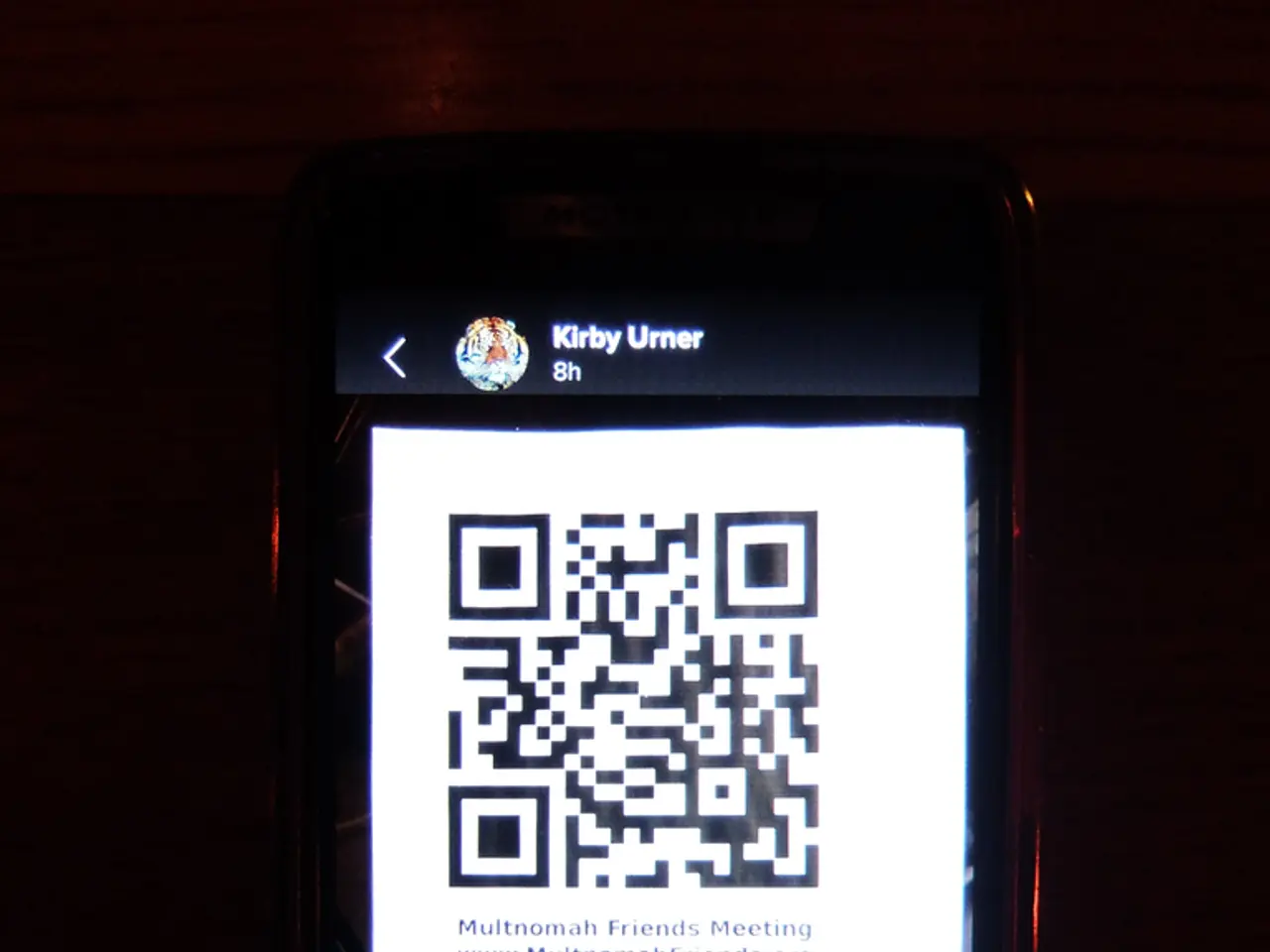Digital money exchange via QR codes: Facilitating cross-border transactions
In the ever-evolving global payments landscape, a significant shift is taking place in Southeast Asia. The region is witnessing a surge in the adoption of QR code payments, transforming the way cross-border transactions are conducted [1][3].
Countries like Singapore, Cambodia, Indonesia, Malaysia, the Philippines, Thailand, and Vietnam are embracing QR code technology for cross-border payments, making transactions simpler and more efficient [1][3]. This trend is driven by factors such as rapid economic growth, widespread smartphone adoption, government support for digital payment infrastructure, and the increasing digitalization of regional trade and Small and Medium Enterprises (SMEs) [1][3].
One of the key drivers of this shift is standardization and interoperability. Standardized QR code systems, such as Indonesia’s QRIS, allow multiple payment providers to operate under one code, facilitating easier cross-border use [1][3][5]. For instance, QRIS enables payments in Japan through JPQR [1][3][5].
The growing digital economy and e-commerce in Southeast Asia are another significant factors. Digital transactions in the six largest Association of Southeast Asian Nations (ASEAN) countries were approximately $1 trillion in 2023 and are expected to double by 2030, driving cross-border e-commerce and SME turnover [1][3].
Regional integration initiatives also play a crucial role. ASEAN countries are creating cross-border fast payment linkages, such as PromptPay–PayNow between Thailand and Singapore, which pave the way for real-time, borderless payments [1].
Technological advancements, such as the adoption of blockchain, AI risk monitoring, and biometric authentication by key players like UnionPay, are enhancing trust and security in QR code cross-border payments [4]. Future integration of Central Bank Digital Currencies (CBDCs) with QR payments could further lower costs and enhance efficiency in cross-border settlements [1].
Beyond Southeast Asia, trends suggest that QR code cross-border payment linkages are expanding globally. Countries like Japan, South Korea, China, and even regions like the Middle East are collaborating on cross-border QR payment schemes [1][2][5]. The emerging interoperability between payment standards and strong regional collaborations backed by large financial institutions indicate a growing worldwide network [1][2][5].
As a result, it is likely that QR code cross-border payment linkages will expand globally over the next decade, driven by continued smartphone penetration and digital payment adoption worldwide, demand for faster, cost-effective remittances and trade payments, regulatory harmonization, and technological innovation [1][2][4][5].
In conclusion, the main factors driving QR code use for cross-border payments in Southeast Asia are digitization, standardization (QRIS), regional cooperation, rising e-commerce, and technological innovations. With interoperability and infrastructure maturing worldwide, the global expansion of such linkages is expected to continue, revolutionizing the cross-border payments industry.
[1] The Asian Development Bank. (2023). QR Code Payments: A Game Changer for Cross-Border Transactions in Southeast Asia. Retrieved from www.adb.org/publications/qr-code-payments-game-changer-cross-border-transactions-southeast-asia
[2] Lee, J. (2023). Korean Banks Expand QR Code Payment Services in Southeast Asia. Retrieved from www.koreatimes.co.kr/www/news/biz/2023/03/151_295110.html
[3] Tan, H. (2023). The Rise of QR Code Payments in Southeast Asia. Retrieved from www.techinasia.com/2023/03/the-rise-of-qr-code-payments-in-southeast-asia
[4] UnionPay. (2023). Enhancing Trust and Security in QR Code Cross-Border Payments. Retrieved from www.unionpay.com/global/en/about/news/2023/03/20230315-01.html
[5] World Bank. (2023). Interoperability of QR Code Cross-Border Payment Linkages: Challenges and Opportunities. Retrieved from www.worldbank.org/en/publication/interoperability-qr-code-cross-border-payment-linkages-challenges-and-opportunities
- As Southeast Asian economies continue to digitalize, the finance industry is increasingly relying on technology to streamline cross-border transactions, such as the adoption of QR code payments, enhancing efficiency and creating an integrated digital payment landscape.
- To further bolster trust and security in cross-border QR code payments, key players like UnionPay are integrating innovative technologies such as blockchain, AI risk monitoring, and biometric authentication, which aligns with the broader trend of technological advancements reshaping the global finance sector.




